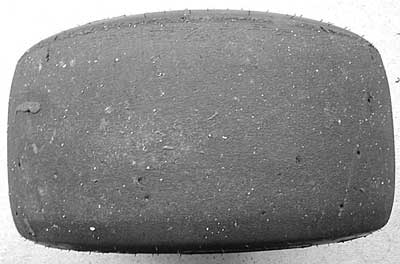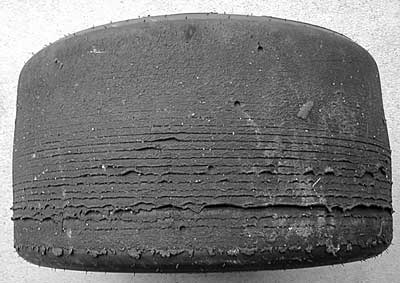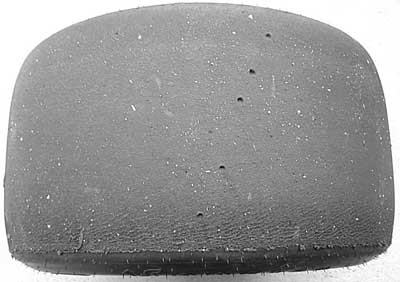First, I think that people is overtaking normally. When you measure overtaking you find it is pretty stable for the last 10 years, as I've shown a couple of times. Sorry for the old graph, but I am to lazy to look for a more recent version:
 Second
Second, may I add some more definitions?
Hardness, actually, can mean
any of three things. There they go:
1. Scratch hardness: resistance for the material to be ripped out by friction. I think this is what we mean when we talk of "hard" or "soft" tyres. It depends on the plastic deformation that the material can take before breaking.
2. Indentation hardness: resistance to penetration by a hard object (the one you measure with the
Mohs scale) at constant load. In this sense, diamond is the hardest. I don't think it's important for racing tyres.
3. Rebound hardness: capacity to rebound under load. Depends on the elasticity. It is very important in racing tyres, as explained
here. Rubber has an elasticity that varies a lot under load (up to 1.000 times of variation, depending on the speed of the load).
Delamination: a fancy word for chunks of rubber ripped out of the tyre. Pieces of the thread part company with the carcasse. Normally, it's caused by heating of the tyres.
Racing front tyre showing normal wear (thanks to the article recommended by DaveKillens ages ago)
 Extremely grained front tyre, almost fully delaminated.
Extremely grained front tyre, almost fully delaminated.

The heat that provokes this kind of delamination is caused by understeer. You see it in the front tyres, even on TV: they become gray (stop shining) in the entrance of curves because they heat too much.
The "uneveness" in tyre heating that Jersey Tom asks about (I think) was explained in another thread, here:
check flynfrog posts, down the thread.
Chatter: same thing, chunks ripped out of your tyre, but because the tyres develop more force than the chassis can handle.
Racing rear tyre grained in the inside (bottom of the picture). Ask yourself if you're setting or asking for too much camber. Notice the graining is not continous, suggesting the car slips in heavy acceleration or lacks chassis rigidity
 Blistering
Blistering: blistered tyres are conventionally blamed on a fault of the manufacturer OR on a driver too hard on the throttle at the exit of curves.
Blistered wet racing tyre, posted here by f1.redbaron. Too hard on the throttle, or bad chosen or deflated tyres (they heat internally, because of too much flexing)
 Third
Third, as you can see, no one of these definitions takes in account the grooving of tyres. Grooved tyres have a larger load (that's what the grooves are for), that's it. Grooved tyres should grain easier than slicks because of a larger load.
In the end, FIA wants to limit speeds on fast curves, as article 12 in FIA 2009 regulations says:
If, in the interests of maintaining current levels of circuit safety, the FIA deems it necessary to reduce tyre grip, it shall introduce such rules as the tyre supplier may advise or, in the absence of advice which achieves the FIA's objectives, specify the maximum permissible contact areas for front and rear tyres.
Fourth and finally, what you're going to have next year are tyres that are less loaded, because aerodynamic loads will be smaller, "compensating" the grooves. The tyres will be smaller, because of the grooves, but will be less loaded, because of aerodynamic restrictions.
I think tyres will last more, you'll have less marbles, cars will be slower on fast curves but harder to handle on slower ones.
Let's wait and see, but it sounds like a good idea to me.







